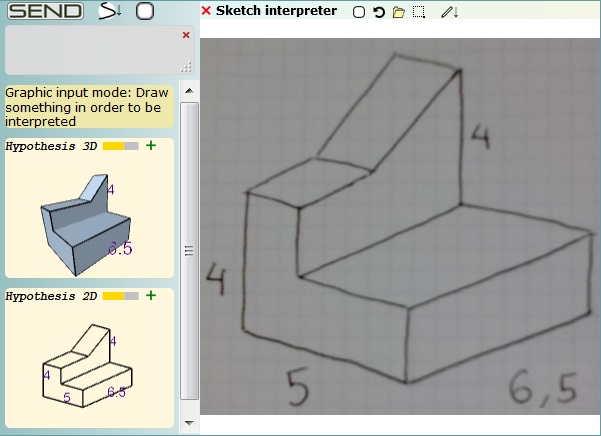The content for this guest article was provided by Juan Andrés Hurtado, the Director and Chief Researcher of the non-profit Laboratory of Artificial Intelligence for Design (www.lai4d.org). LAI4D is an R&D project aiming to develop Artificial Intelligence able to understand the user's ideas regarding spatial imagination.
The Laboratory of Artificial Intelligence for Design (www.lai4d.org) has developed a web application based on AI that is able to conceptualize hand-made drawings. The online tool, that can be used for free and without registration, is a 3D CAD application that incorporates a special design assistant in charge of extracting 2D or 3D conceptual geometries from pictures or sketches provided by the user as input.
The eventual goal of the tool is to achieve a human-degree 3D interpretation or 3D understanding of images. The current experimental version interprets simpler polyhedrons i.e. 3D shapes formed by flat faces, not by curved faces like a sphere or cylinder. As seen in the videos, the sketch interpreter can recognize numbers (measures) using the implemented OCR (Optical Character Recognition). In addition, using its function for “imagining hidden faces”, it can speculate about faces hidden in the sketched projection.
The online AI design assistant (that contains the sketch interpreter) is a sub-function of a CAD application. In a conventional CAD application (which has higher performance capabilities than web applications), the user creates geometric entities by calling commands and entering coordinates. The LAI4D's CAD application provides all the design functions that a desktop CAD application can provide (though with lower performance), but additionally s/he can utilize the sketch interpreter, the real objective of the LAI4D project. Additionally LAI4D offers other interesting and uncommon features like defining sub-drawings or algorithmic entities programmable via JavaScript.
Most existing technologies in the field of artificial vision are based on Convolutional Neural Networks (CNN) and Deep Learning. The execution of complex CNNs for image recognition (trained to recognize many different elements) needs a lot of computing resources and online AI based applications delegate this execution to remote powerful servers. These networks need to be trained with thousands of examples (deep learning) in order to get a good success rate at shape recognition. The process of shape recognition attempts to find a match for the analyzed image (or other input) within a shape descriptions database. If the input is different from the example set, the recognition will be probably unable to correctly recognize or categorize the input.
However, the research carried out by LAI4D has followed an unconventional path. The project only uses a simple CNN for the OCR function (trained to recognize only 10 different digits). Since the complete application is not based on CNN, the current release of the LAI4D designer can be executed within a reasonable time on a normal personal computer and external servers are not needed. In addition, the AI approach used in LAI4D does not depend on Deep Learning and there is no predefined set of recognizable geometries. The sketch interpreter is able to interpret (conceptualize) generic or never-seen-before polyhedrons.The shape conceptualization process “imagines” the shape represented by the analyzed image regardless of whether it is a recognizable shape or an abstract one. returning the imagined shape’s geometry as result.
This software, despite its early stage of development, is another demonstration of how Artificial Intelligence is going to change the way humans work. In the future, sophisticated applications like engineering tools, nowadays intended only for expert designers, will be accessible to any person thanks to the availability of powerful smart assistants. These virtual companions will be able to understand what the user wants by utilizing cognitive algorithms to enable an almost natural human-machine communication.


